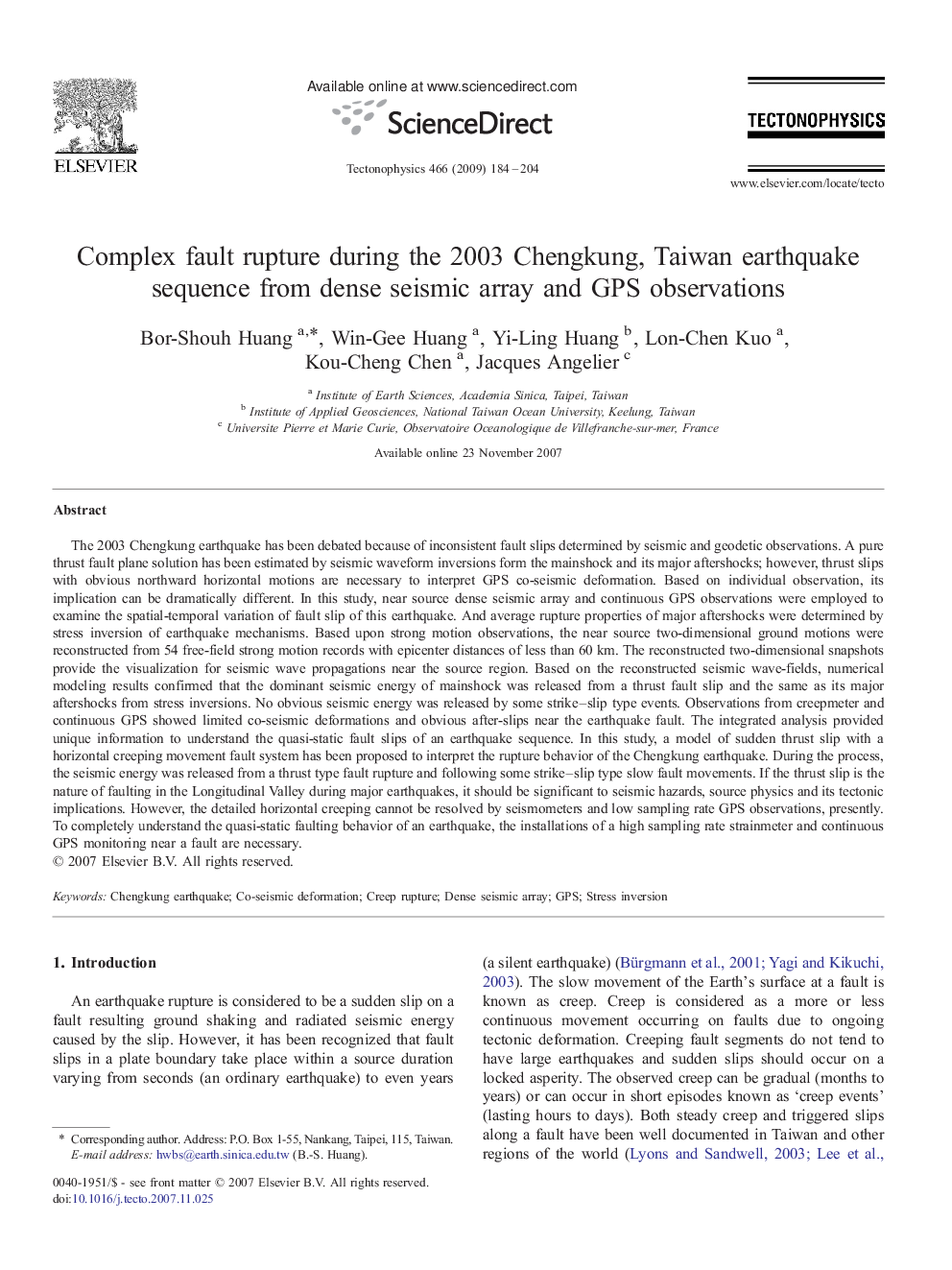| کد مقاله | کد نشریه | سال انتشار | مقاله انگلیسی | نسخه تمام متن |
|---|---|---|---|---|
| 4694247 | 1636898 | 2009 | 14 صفحه PDF | دانلود رایگان |
عنوان انگلیسی مقاله ISI
Complex fault rupture during the 2003 Chengkung, Taiwan earthquake sequence from dense seismic array and GPS observations
دانلود مقاله + سفارش ترجمه
دانلود مقاله ISI انگلیسی
رایگان برای ایرانیان
کلمات کلیدی
موضوعات مرتبط
مهندسی و علوم پایه
علوم زمین و سیارات
فرآیندهای سطح زمین
پیش نمایش صفحه اول مقاله

چکیده انگلیسی
The 2003 Chengkung earthquake has been debated because of inconsistent fault slips determined by seismic and geodetic observations. A pure thrust fault plane solution has been estimated by seismic waveform inversions form the mainshock and its major aftershocks; however, thrust slips with obvious northward horizontal motions are necessary to interpret GPS co-seismic deformation. Based on individual observation, its implication can be dramatically different. In this study, near source dense seismic array and continuous GPS observations were employed to examine the spatial-temporal variation of fault slip of this earthquake. And average rupture properties of major aftershocks were determined by stress inversion of earthquake mechanisms. Based upon strong motion observations, the near source two-dimensional ground motions were reconstructed from 54 free-field strong motion records with epicenter distances of less than 60Â km. The reconstructed two-dimensional snapshots provide the visualization for seismic wave propagations near the source region. Based on the reconstructed seismic wave-fields, numerical modeling results confirmed that the dominant seismic energy of mainshock was released from a thrust fault slip and the same as its major aftershocks from stress inversions. No obvious seismic energy was released by some strike-slip type events. Observations from creepmeter and continuous GPS showed limited co-seismic deformations and obvious after-slips near the earthquake fault. The integrated analysis provided unique information to understand the quasi-static fault slips of an earthquake sequence. In this study, a model of sudden thrust slip with a horizontal creeping movement fault system has been proposed to interpret the rupture behavior of the Chengkung earthquake. During the process, the seismic energy was released from a thrust type fault rupture and following some strike-slip type slow fault movements. If the thrust slip is the nature of faulting in the Longitudinal Valley during major earthquakes, it should be significant to seismic hazards, source physics and its tectonic implications. However, the detailed horizontal creeping cannot be resolved by seismometers and low sampling rate GPS observations, presently. To completely understand the quasi-static faulting behavior of an earthquake, the installations of a high sampling rate strainmeter and continuous GPS monitoring near a fault are necessary.
ناشر
Database: Elsevier - ScienceDirect (ساینس دایرکت)
Journal: Tectonophysics - Volume 466, Issues 3â4, 10 March 2009, Pages 184-204
Journal: Tectonophysics - Volume 466, Issues 3â4, 10 March 2009, Pages 184-204
نویسندگان
Bor-Shouh Huang, Win-Gee Huang, Yi-Ling Huang, Lon-Chen Kuo, Kou-Cheng Chen, Jacques Angelier,